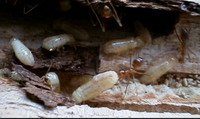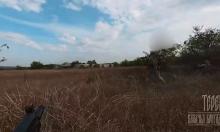Campers transport insect-infested firewood
As millions of Americans pack for their first camping trips of the season this weekend, foresters warn to leave firewood behind.

The U.S. Forest Service and state forestry agencies around the country say transporting firewood lets tree-killing insects hitch a ride into the woods, contributing to billions of dollars in damage and needless work each year.
"While some insect species might spread 40 miles (65 kilometers) in a year by natural migration, a person hauling infested firewood from home to camp could move a species hundreds of miles in a single day. It's like making the jump to light-speed for the bug," said Bernie Raimo, the Forest Service's forest health group leader in the Northeast.
Officials advise campers to get firewood at or near their destinations instead.
Invasive insects and plants cause about US$120 billion (89 billion EUR) in forest damage, lost revenue and prevention expenses each year, said Glenn Rosenholm, a Forest Service spokesman based in New Hampshire.
Most invasive insect species are introduced to North America from Asia and Europe via international trade. The invaders often have no local predators, allowing them to flourish unchecked.
And they are getting plenty of help moving to new areas.
New Hampshire learned in a recent survey that nearly half its campers come from other states. And about half of all campers brought firewood from home, including some who came from as far away as California and Ontario, Canada.
In Minnesota, state surveys show that about half of the vehicles that visit parks overnight carry firewood - about 50,000 loads of potentially infested wood in 2005.
Wood from infested or dying trees often is packed as firewood.
"Chances are you would eventually cut it down, and if you are going camping, you couldn't find better firewood from a tree that was dying and drying out," said Dennis Souto, a Forest Service entomologist.
Many states are facing a common enemy - the emerald ash borer, an insect that has infested about 40,000 square miles in Michigan, Indiana, Ohio, Maryland and Ontario Province and killed more than 20 million ash trees.
The borer is a metallic-green beetle about a half-inch long. Its larvae feed on the layer of wood just beneath the bark, cutting off water and nutrients.
The Forest Service and state agencies are spreading the word to campers around the country to prevent the insect from doing more harm. If public education does not work, they say bans similar to those already in place in the Midwest might follow.
Several Midwestern states ban firewood from out of state, and others are considering bans, Rosenholm said. When a new emerald ash borer outbreak is detected, states often ban the movement of firewood altogether.
Some states also have quarantines to prevent lumber and wood movements within their state lines. At least a dozen states also have announced voluntary or mandatory restrictions specifically on imported campfire wood.
Still, the emerald ash borer outbreak is spreading, with two new discoveries just this week in Ohio, said Sharon Lucik, a federal Agriculture Department spokeswoman.
"It's being spread through people who camp, through the movement of nursery stock and through the movement of green lumber such as ash logs with bark," she said.
Subscribe to Pravda.Ru Telegram channel, Facebook, RSS!




